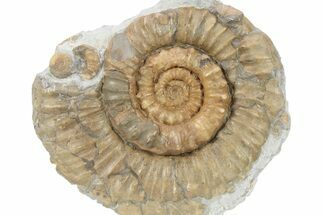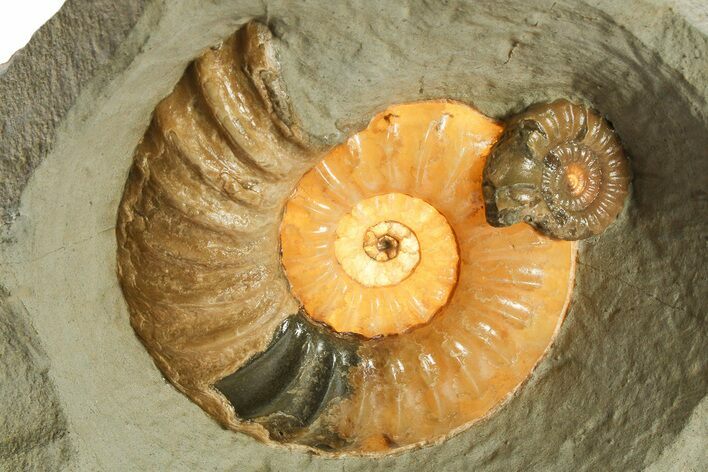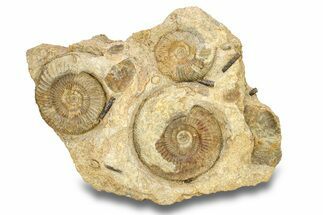This Specimen has been sold.
3.2" "Glowing" Fossil Ammonite (Asteroceras) - Dorset, England
This is a beautifully preserved 3.2" ammonite (Asteroceras obtusum) fossil from the Lyme Regis region of England. There are three complete ammonites clustered together within the rock, the largest of which measures 3.2" wide. These ammonites were naturally replaced with calcite which fluoresces white-yellow under short-wave UV light. The two largest ammonites have been exposed along both sides of the rock, allowing for multiple presentation options. This type of ammonite preparation is ideal for backlighting as the ammonites are translucent. Two of the photos above show the ammonites backlit. A very cool association and an excellent display piece.
A display stand will accompany the specimen to assist with presentation.
A display stand will accompany the specimen to assist with presentation.
About Ammonites
Ammonites were ancient marine cephalopods, similar to today's squids and octopuses, but with a defining feature: their distinctive, tightly coiled spiral shells. These shells, resembling those of modern nautiluses, served as both a protective home and a buoyancy aid, allowing ammonites to navigate the prehistoric seas with ease. First emerging around 240 million years ago in the Triassic Period, ammonites thrived for over 175 million years, adapting through numerous forms and sizes. As predatory creatures, they likely fed on smaller marine organisms, using their tentacles to capture prey. However, their long reign came to an end 65 million years ago at the close of the Cretaceous, coinciding with the mass extinction event that also eliminated the dinosaurs.
Ammonites were ancient marine cephalopods, similar to today's squids and octopuses, but with a defining feature: their distinctive, tightly coiled spiral shells. These shells, resembling those of modern nautiluses, served as both a protective home and a buoyancy aid, allowing ammonites to navigate the prehistoric seas with ease. First emerging around 240 million years ago in the Triassic Period, ammonites thrived for over 175 million years, adapting through numerous forms and sizes. As predatory creatures, they likely fed on smaller marine organisms, using their tentacles to capture prey. However, their long reign came to an end 65 million years ago at the close of the Cretaceous, coinciding with the mass extinction event that also eliminated the dinosaurs.
SPECIES
Asteroceras obtusum
LOCATION
Charmouth, Lyme Regis, Dorset, England
FORMATION
Lower Lias, Obtusum Zone
SIZE
Largest Ammonite 3.2" wide. Entire specimen 8.1 x 6.5"
CATEGORY
SUB CATEGORY
ITEM
#279472
We guarantee the authenticity of all of our specimens.
 Reviews
Reviews
















